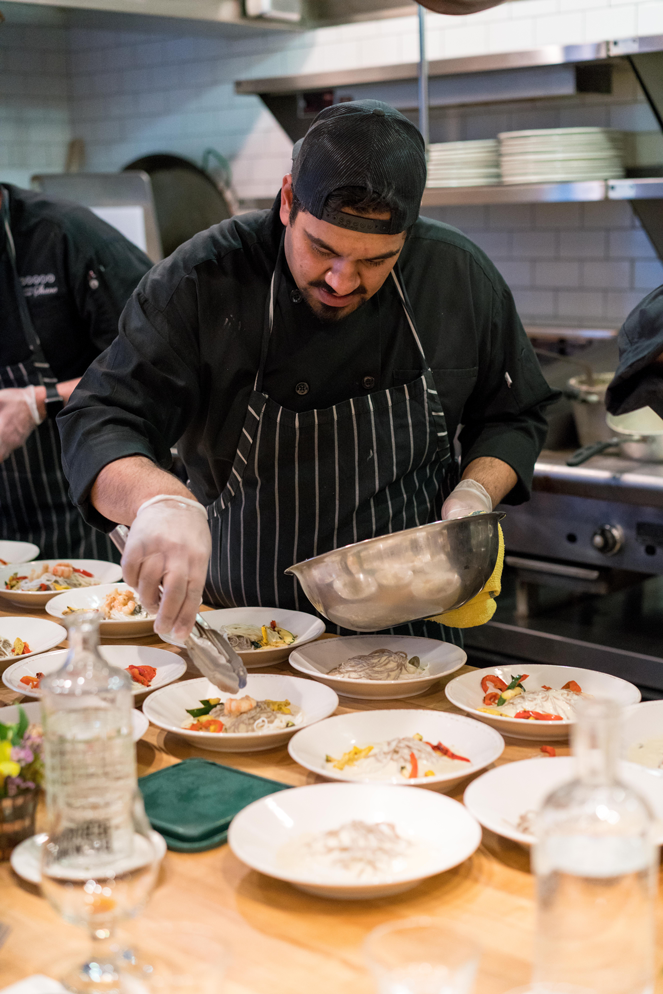Take-aways from the 2019 NYC Restaurant Technology Summit
Yesterday, several members of the xtraCHEF team attended the NYC Restaurant Technology Summit hosted by CohnReznick and the NYC Hospitality Alliance. The event gathered industry experts, investors, operators, and technology professionals for a day of networking and thought-provoking presentations.
One such presentation from the Restaurant Technology Summit that I found to be particularly interesting was titled simply: “What is AI?” The session was an intro to artificial intelligence, or AI in the restaurant industry.
The session was presented by Rob Carpenter, Founder & CEO of Valyant AI, a company that (according to their Twitter profile) is building enterprise-grade conversational AI for the restaurant, retail and service-based industries.
But, what does this mean for the future of the restaurant industry? That’s a question Rob sought to address in yesterday’s session. Below are some of my take-aways…
The Robots are Coming…or, are they?
Rob started his presentation by disarming the audience and addressing some of the common misconceptions of what artificial intelligence means for the restaurant industry and humanity at large. He did so by distinguishing between Artificial General Intelligence and Artificial Narrow Intelligence.
Artificial General Intelligence is the one commonly depicted in science fiction movies and is the one that might get you worried. It is defined as intelligence of a machine that has the capacity to understand or learn any intellectual task that a human being can. This notion combined with some of the footage recently shared by Boston Dynamics could give legitimate concern to us humans that the robots are indeed coming.
Check out the video below.
While some research is being done on Artificial General Intelligence, most research and product development today, at least according to Carpenter, is being done on Artificial Narrow Intelligence.
Artificial Narrow Intelligence is the use of software to study or accomplish specific problem solving or reasoning tasks. In other words, feed computer algorithms lots and lots of data and allow those algorithms to analyze, interpret and learn from the data in an effort to improve outcomes faster and more efficiently.
This may also be commonly referred to as machine learning, a branch or subset of artificial intelligence. Machine learning is the scientific study of algorithms and statistical models that computer systems use to perform a specific task without using explicit instructions, relying on data patterns and inference instead.
So, are the robots coming? Yes, but not in the way you might think.
What does AI in the Restaurant Industry look like?
For Valyant AI, artificial intelligence in restaurants looks like what Carpenter describes as a “digital employee“.
By employing rapidly developing technologies like conversational AI and natural language processing, Valyant AI aims to allow guests to have open-ended conversations with robots to place orders in drive-throughs, mobile phones and kiosks. They plan to bring this to market in the next 18-24 months.
Carpenter noted that this does appear to be where the industry is heading as indicated by recent acquisitions by McDonalds. This year, McDonalds acquired two companies, Dynamic Yield and Apprente, giving them the tools and the teams to to automate order taking while using data to make personalized suggestions based on the customer.
While you await the arrival of automated order taking, you don’t have to look any further to see artificial intelligence in the restaurant industry in action. In fact, xtraCHEF is already using AI in the restaurant industry.
xtraCHEF employs machine learning in our automated invoice processing solution for restaurants. By feeding high volumes of invoices and line-item SKUs into our system, our recognition software gets smarter about accurately identifying the correct vendor, extracting the appropriate data points related to unit price, unit of measurement, etc. and is able to then automatically apply the correct GL and cost category accurately each and every time going forward. The more invoices our customers scan, the easier it is for our software to automate this process.
And, just like Valyant AI, we have teams of quality control operators (i.e. humans) monitoring the data quality to ensure the robots are getting it right.
Why Invest in AI in the Restaurant Industry
So, why does your restaurant need to consider the implications of AI in the restaurant industry?
Rob Carpenter cited a few of the following reasons:
- Ease labor shortage
- It’s hard to find good talent. If you can automate simple tasks, it reduces the workload and the turnover of your employees. It also allows you to find the best employees.
- Save time
- Valyant AI promises to reduce order times and wait times saving the customer and your team time. Similarly, xtraCHEF not only speeds the time that it would take to process an invoice manually but also provides visibility into food costs faster and more efficiently than traditional methods.
- Improve Service & Profits
- Allowing your team the time to focus on what they do best instead of routine tasks makes for a better experience for your guests and a more profitable operation for your restaurant.
Simply put, AI in the restaurant industry has arrived. If you’re not adopting these technologies, your competitors probably are. And, when they get it right, they’re going to be more profitable. Profitability attracts capital. Capital yields more investment. More investment yields more advantage.
And, that’s why it’s so valuable to attend events like the Restaurant Technology Summit. By staying informed of industry trends and innovations, you can stay ahead of curve and ahead of your competition.
We hope to see you at one of the upcoming restaurant industry events.
If you missed our 30-second commercial (or wanted to see it again), check it out:


